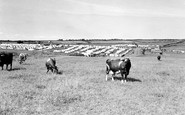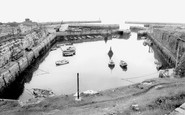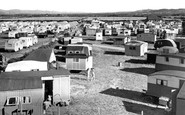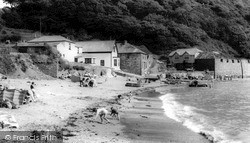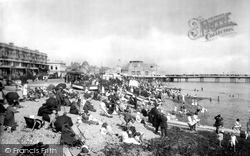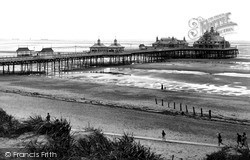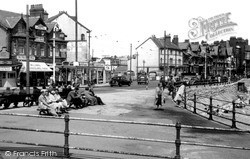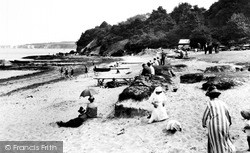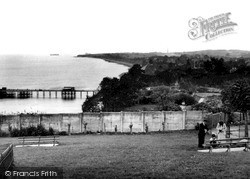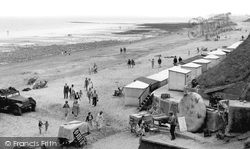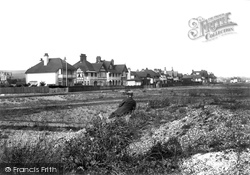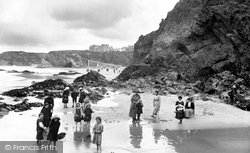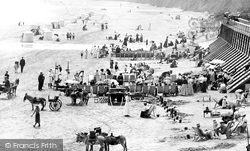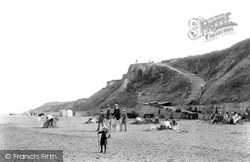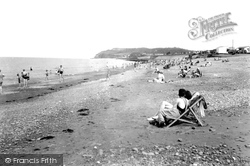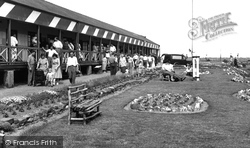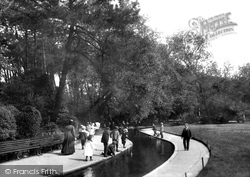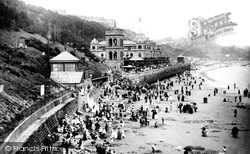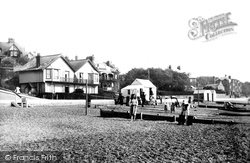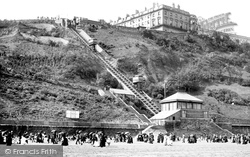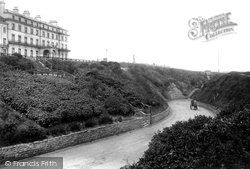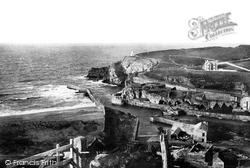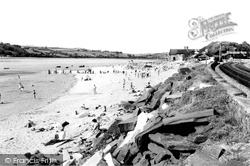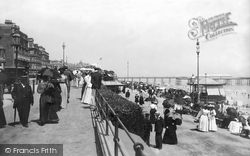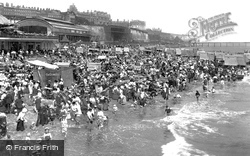Merry Christmas & Happy New Year!
Christmas Deliveries: If you placed an order on or before midday on Friday 19th December for Christmas delivery it was despatched before the Royal Mail or Parcel Force deadline and therefore should be received in time for Christmas. Orders placed after midday on Friday 19th December will be delivered in the New Year.
Please Note: Our offices and factory are now closed until Monday 5th January when we will be pleased to deal with any queries that have arisen during the holiday period.
During the holiday our Gift Cards may still be ordered for any last minute orders and will be sent automatically by email direct to your recipient - see here: Gift Cards
Places
1 places found.
Those places high-lighted have photos. All locations may have maps, books and memories.
Photos
11 photos found. Showing results 801 to 11.
Maps
4 maps found.
Books
1 books found. Showing results 961 to 1.
Memories
1,368 memories found. Showing results 401 to 410.
1970s To Present Memories
I have many happy childhood memories of this lovely place - we had a caravan around the corner in Lligwy Bay (nr Benllech) for over 10 years and this was one of the best beaches around. I remember walking from ...Read more
A memory of Red Wharf Bay in 1975 by
Mersea Island Primary School 1950s
Born on Mersea island- what a haven we school children had to live and grow in. Endless poppy fields and bluebell woods, golden beaches and primrose banks flanked the leafy lanes. Greedy land grabbers have ...Read more
A memory of West Mersea in 1956 by
Cows?
How strange to see cows on this picture. I remember lots and lots of sheep. The highlight of our walk across the main road and down the steep path to the beach (often through a layer of fog which blotted out the sun when you got there!) was to make baaing noises and wait for the reply!
A memory of Cayton Bay in 1964 by
Elvaston Cottage Marsh Road Fleggburgh/ Burgh St Margaret
I moved to Fleggburgh in about 1996/97? I moved in with my father who had owned Elvaston Cottage for a few years. The house was a very thick walled place with large fire places and tons ...Read more
A memory of Fleggburgh in 1997 by
Born On Estate
My birth certificate 1938 says Roseneath; father was a gardner on the estate and have photos of the estate cottage. Also pictures of reputedly oldest trees in Scotland called Adam and Eve, probably long chopped down as castle. ...Read more
A memory of Rosneath in 1930 by
Alexandrina Ogilvie
I left Scotland heading to Australia on the SS Ormonde. My dad Frank, worked in the railways in Thornton. I can remember the smell of the steam engines which I still love. I did go back a few years ago to try and ...Read more
A memory of Thornton in 1949 by
Seaham Harbour
All my family come from Murton, some are still there. I remember as a child going to the harbour and getting fresh crabs - they were big ones, and once one grabbed my granda`s coat and we had to free him as the claws were big too. ...Read more
A memory of Seaham by
Felixstowe In The 1970's And The Chippy Fire(S)!
We used to go to 'Beach Station' caravan park (Walton Avenue) for our annual August one-week holiday. My parents didn't own a car and living in Stowmarket, Felixstowe was very near and convenient! ...Read more
A memory of Felixstowe in 1977 by
Wounderful Memories
Worked at the Bay Hotel as a chambermaid, to start with on weekends and school holidays. Worked with great people, and the guests were wounderful too. Very fond memories, met my husband at the disco there, it's a great shame it was demolished. Wounderful place with the fantastic beach.
A memory of Rhosneigr in 1972
1968 To 1976
We took our children every year from 1968 till 1976. There was a building near the beach behind Kinmel Bay which has diamond shaped leaded windows. Does anyone have a photo please? We stayed at Winkups too.We went to the club every ...Read more
A memory of Towyn by
Captions
1,130 captions found. Showing results 961 to 984.
Children play on the beach and collect flotsam from the tide line while their parents sit beside windbreaks. The roof on the fish palace has now almost completely gone.
Between the wars, Worthing lost its wonderful town hall and theatre.
The pier was designed and constructed by Mr A Dowson and opened by Lord Stanley in 1855. In 1899 the Moorish Pavilion was added, and the Floral Hall opened in 1910.
The White Horse Inn dates from 1851, and was built on land owned by William Primrose, a brewer from Trunch. Another older pub, the Fishing Boat, dates from 1840.
It is a nice sunny day; there are people about, and there is time for a leisurely chat, while some seem interested in the beach just out of shot.
The journey to Studland Bay was probably the favourite excursion for tourists from Swanage, who could either get there by walking along the cliff tops or by taking a carriage or charabanc along the
This striking view across the bay was taken from the grounds of The Kymin. The house is one of the very few left that are 'pre Esplanade', itself occupying the site of an earlier farm.
Families are leaving the beach and strolling to the roadway, which is a short distance from the village centre.
Kingsdown stands on the coast where the white cliffs of Dover give way to the extensive shingle beach that runs eastwards to Walmer & Deal. Caesar is said to have landed in this vicinity in 55BC.
The Great Western Railway found Newquay a small and almost inaccessible Cornish fishing village, and have transformed it into quite a fashionable seaside resort.
Deckchairs and beach tents were available for hire, and the donkeys are saddled to take different age groups.
Its church disappeared from the cliffs into the ever-encroaching sea in the reign of Richard II. Another was built, and that too was a ruin for a number of years - it has since been restored.
After the historic riches of Dunster we descend, physically as in other ways, to Blue Anchor Bay, a seaside resort with a long beach and little character.
Hopton is a diminutive village resort on the A12 just south of Great Yarmouth.
The Pleasure Gardens with their scented pines and attractively laid out grounds were popular with people of all ages, at a time when fashion and social mores decreed that the human form should remain
On the beach in the background are a number of bathing machines. Ladies wishing to bathe would enter the machines from the landward side and horses would haul the contraptions down into the water.
On the beach in the background are a number of bathing machines. Ladies wishing to bathe would enter the machines from the landward side and horses would haul the contraptions down into the water.
The pair of wooden houses were called Montpelier in 1885; the next building is of 1889, and the building partly hidden by trees was Harland House in 1885.
The South Cliff Tramway offered an alternative means of escape from the beach to the Esplanade; the other way up was by the 224 steps cutting through the Spa Gardens.
This road up from the beach was first started at the time that George Hudson bought the West Cliff Estate in the 1850s, and it got the name from the strategic pass important in the Afghan wars, which
Portreath was a busy mining port in the 19th century, when sailing vessels loaded copper ore for the Welsh smelters and returned with coal for the mine engines.
Here we can see a closer view of the railway line, which runs parallel to the river virtually all the way to Carmarthen.
Here we see another busy beach view in 'The Empress of Watering Places' with many umbrellas protecting ladies from the summer sun.
The sandy beach is overwhelmed by a tide of holidaymakers, most of whom have probably arrived here by train at the station in the left background.
Places (1)
Photos (11)
Memories (1368)
Books (1)
Maps (4)

